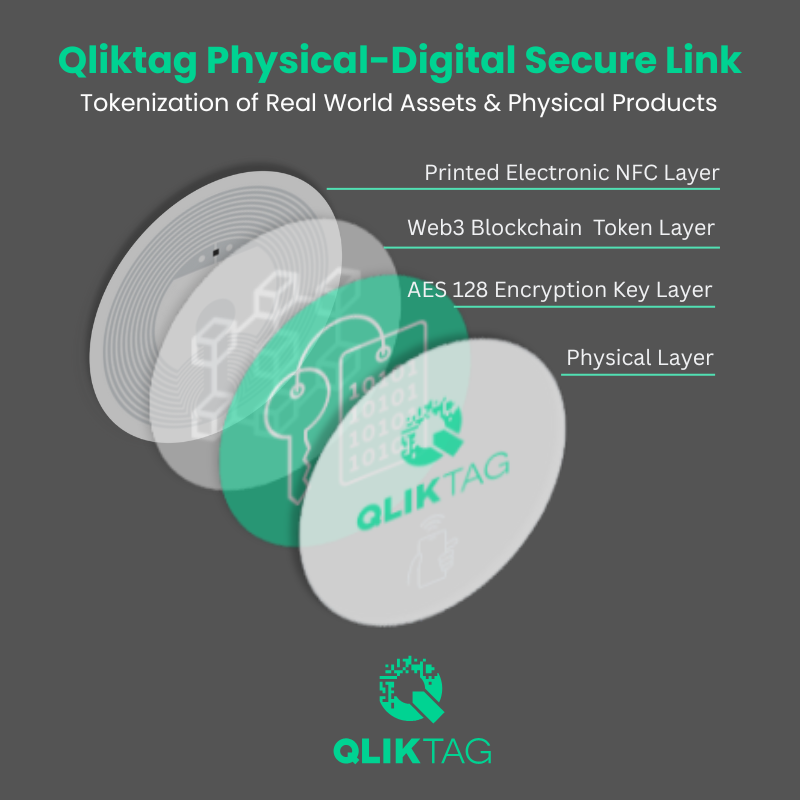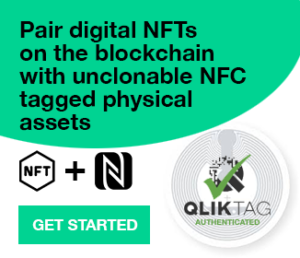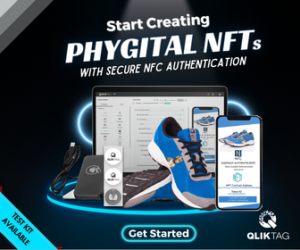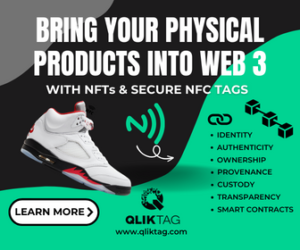In today’s digital-first world, Real World Asset Tokenization (RWA tokenization) is quickly becoming one of the most exciting frontiers in blockchain and Web3 innovation.
Imagine being able to buy, sell, or trade a luxury watch, collectible, or piece of art—without ever shipping it across the globe. Or owning a fraction of a multimillion-dollar real estate property from the comfort of your phone. That’s the power of RWA tokenization. It’s transforming how we interact with real, tangible assets.
But while the tech is evolving fast, there’s still a crucial missing piece in most tokenization models: how do we really verify that a physical item corresponds to its digital token? That’s where NFC authentication and solutions like Qliktag’s secure unclonable NFC tags come in.
Let’s break it down.
What is Real World Asset Tokenization?
Real World Asset Tokenization is the process of turning a real, physical item—like a car, artwork, fashion item, or collectible—into a digital token on the blockchain. That token acts like a certificate of ownership and can be traded or transferred just like cryptocurrency or NFTs.
Tokenizing physical assets has some massive advantages:
- Fractional ownership: Own just a slice of a high-value asset.
- Global liquidity: Trade instantly on digital platforms, from anywhere.
- Reduced friction: Skip the paperwork, middlemen, and shipping.
- More transparency: Blockchain-backed provenance and ownership records.
It’s no wonder we’re seeing this explode across industries like real estate, luxury goods, fashion, and art.
The Challenge: Connecting Physical Assets to Digital Tokens
Here’s the problem: just minting a token on a blockchain doesn’t guarantee that it’s linked to the actual physical item. Anyone could create a token and claim it’s for a specific rare item—even if it’s not. There’s often no reliable, tamper-proof way to verify that the token and the real-world object match.
Without a secure link, the whole system is vulnerable to fraud, duplication, and mistrust.
So how do we bridge this digital-physical divide?
Qliktag’s Breakthrough: Secure NFC Tags + Web3 Tokenization
Qliktag has developed a powerful solution that brings trust and authentication into RWA tokenization by combining:
- Secure, unclonable NFC tags
- Blockchain tokens
- Digital twins of physical assets
Here’s how it works:
- Tagging the asset: The physical asset—be it a designer sneaker, wine bottle, or sports jersey—is embedded with a secure NFC tag. This tag is built with physically unclonable functions (PUF), making it impossible to copy, tamper with, or remove.
- Minting the token: A unique token is created on the blockchain, tying the asset’s metadata, ownership, and provenance to a smart contract.
- Creating a digital twin: Alongside the token, a digital replica of the physical asset is created—think of it as the asset’s online identity.
- Authentication and ownership transfer: When someone taps the NFC tag with a smartphone, it authenticates the item by reading its secure identifier and verifying it against the blockchain. Ownership can be instantly verified and transferred—without ever moving the actual item.
Why This Matters: Real-World Use Cases
This technology has game-changing implications across multiple industries:
- Luxury Goods: Brands can offer NFT-backed products that prove authenticity and enable verified resale on secondary markets.
- Art and Collectibles: Provenance becomes tamper-proof. Buyers can trust that a digital token truly represents a specific physical piece.
- Fashion & Apparel: Limited-edition clothing can have tokenized proof of originality—and unlock digital features or metaverse wearables.
- Sports Memorabilia: NFC-tagged gear, jerseys, or merchandise can be tokenized and traded with confidence among fans and collectors.
NFC Authentication: The Missing Link in RWA Tokenization
The bottom line? Tokenization without authentication is like a lock without a key. Anyone can mint a token. But only a secure, unclonable NFC tag can link that token back to the real, tangible item it represents.
That’s why NFC authentication is essential—not optional—for the future of Real World Asset Tokenization.
Looking Ahead: The Future of RWA Tokenization
We’re just scratching the surface of what’s possible with Real World Asset Tokenization. As more industries embrace the digital transformation of ownership, the need for secure, trusted connections between physical assets and blockchain tokens will grow exponentially.
Qliktag’s integrated approach—bringing together Web3, secure NFC, and digital twin technology—makes RWA tokenization more scalable, secure, and practical than ever before.
Ready to Explore Secure RWA Tokenization?
If you’re a brand, creator, marketplace, or innovator looking to bring real-world assets into the Web3 economy securely, Qliktag can help you do it—with trust and authentication built in from the start.



